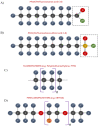PFAS Molecules: A Major Concern for the Human Health and the Environment
- PMID: 35202231
- PMCID: PMC8878656
- DOI: 10.3390/toxics10020044
PFAS Molecules: A Major Concern for the Human Health and the Environment
Abstract
Per- and polyfluoroalkyl substances (PFAS) are a group of over 4700 heterogeneous compounds with amphipathic properties and exceptional stability to chemical and thermal degradation. The unique properties of PFAS compounds has been exploited for almost 60 years and has largely contributed to their wide applicability over a vast range of industrial, professional and non-professional uses. However, increasing evidence indicate that these compounds represent also a serious concern for both wildlife and human health as a result of their ubiquitous distribution, their extreme persistence and their bioaccumulative potential. In light of the adverse effects that have been already documented in biota and human populations or that might occur in absence of prompt interventions, the competent authorities in matter of health and environment protection, the industries as well as scientists are cooperating to identify the most appropriate regulatory measures, substitution plans and remediation technologies to mitigate PFAS impacts. In this review, starting from PFAS chemistry, uses and environmental fate, we summarize the current knowledge on PFAS occurrence in different environmental media and their effects on living organisms, with a particular emphasis on humans. Also, we describe present and provisional legislative measures in the European Union framework strategy to regulate PFAS manufacture, import and use as well as some of the most promising treatment technologies designed to remediate PFAS contamination in different environmental compartments.
Keywords: PFAS; PFOA; PFOS; ecosystem; human health; remediation technologies.
Conflict of interest statement
The authors declare no conflict of interest.
Figures



References
-
- Buck R.C., Franklin J., Berger U., Conder J.M., Cousins I.T., de Voogt P., Jensen A.A., Kannan K., Mabury S.A., van Leeuwen S.P. Perfluoroalkyl and polyfluoroalkyl substances in the environment: Terminology, classification, and origins. Integr. Environ. Assess. Manag. 2011;7:513–541. doi: 10.1002/ieam.258. - DOI - PMC - PubMed
-
- Domazet S.L., Jensen T.K., Wedderkopp N., Nielsen F., Andersen L.B., Grontved A. Exposure to perfluoroalkylated substances (PFAS) in relation to fitness, physical activity, and adipokine levels in childhood: The european youth heart study. Environ. Res. 2020;191:110110. doi: 10.1016/j.envres.2020.110110. - DOI - PubMed
Publication types
LinkOut - more resources
Full Text Sources

